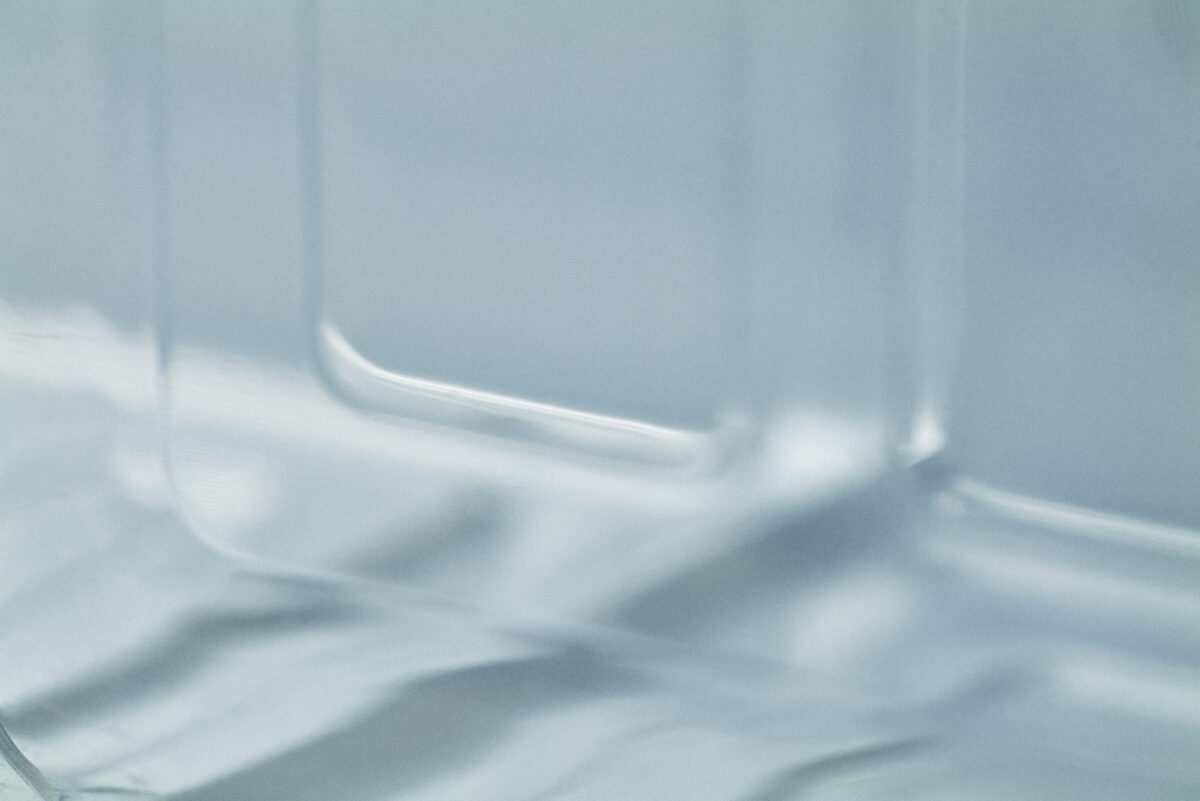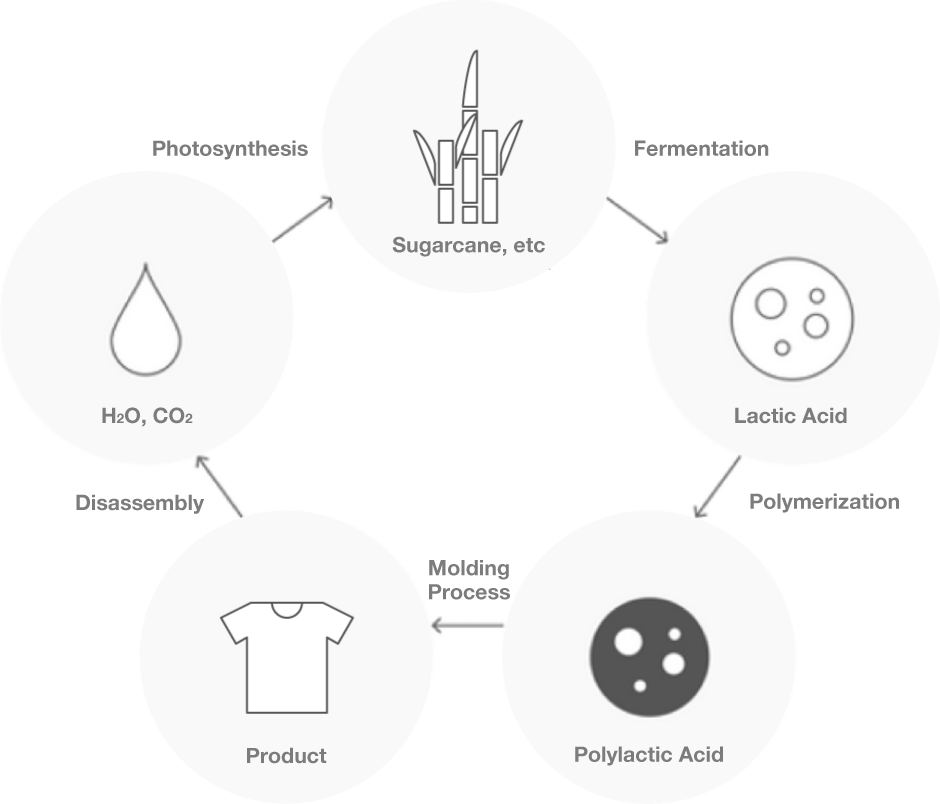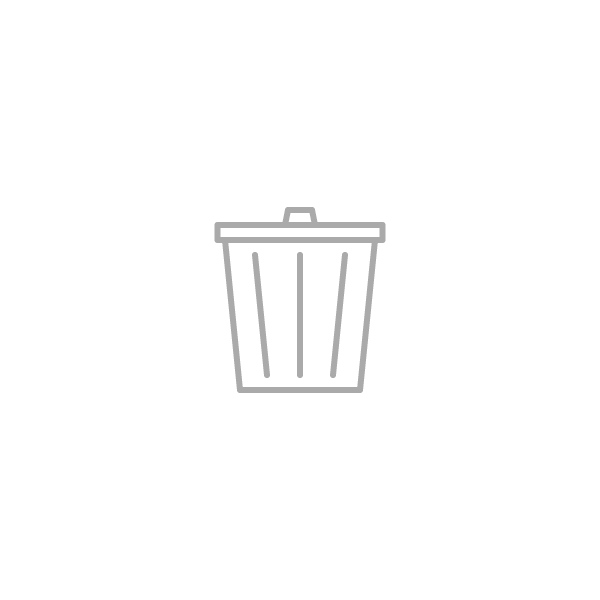
PlaX™

Using plant-based,
bioplastic “PlaX™”
to promote a prosperity.
“PlaX™” is a novel carbon neutral material with improved quality and function, comprised of bioplastic PolyLactic Acid (PLA), a plant-derived material such as sugarcane, and additives exclusively developed by Bioworks.
PlaX™ single-handedly overcomes issues that hindered PLA’s popularity, such as poor durability, heat resistance, fiber dyeing during the manufacturing process. PlaX™ has attracted international attention as a new material which can, not only replace existing synthetic fibers and plastic products, but also be used to actively develop new applications, providing a solution to environmental issues and contribute to the realization of a sustainable recycling society.

Feature
Plant-based
raw materials
As a bioplastic made from sugar collected from sugarcane and is not dependent on oil, PlaX™ addresses environmental issues such as CO2 reduction and alternatives for depleted resources.
Durability,
Heat Resistance
Durability and heat resistance, which were once issues for polylactic acid have greatly improved. As an alternative to petroleum-based plastics and synthetic fibers, PlaX™ can be developed for use in various applications.
Fermentation
as a bioprocess
Lactic acid is produced by fermenting sugar extracted from plants using lactobacillus bacteria. The antibacterial properties of PlaX™ are considered to be derived from lactic acid.
Decarbonization,
carbon neutral
The raw material of PlaX™, polylactic acid, is plant-derived. CO2 emissions during combustion are greatly reduced. In addition, since plants used as raw material absorb CO2 as they grow, PlaX is a carbon-neutral material that does not increase CO2 in the atmosphere.
Contribution
to the environment
According to the life cycle assessment analysis, an approx. 41% reduction in CO2 emissions during manufacture compared to polyester is achieved. Compared to cotton, a 90% reduction in water consumption during manufacture is achieved.

Biodegradability
Hydrolysis of PlaX™ is promoted under certain compost environmental conditions, and it eventually decomposes (biodegrades) into water and CO2 by microorganisms.
In the general soil environment, it is still difficult to meet the temperature and humidity environment conditions suitable for biodegradation. Consequently, use of an industrial compost facility is recommended.

What is Polylactic acid (PLA)?
Polylactic acid is made by bonding lactic acid produced by the fermentation of starch and sugar collected from plants such as sugarcane, corn, and cassava. Development has continued since the 2000s, and use as an alternative material for petroleum-based plastics that can address the CO2 emissions problem is expected.

Future
The future created by PlaX
Daily life in a recycling society
Looking into the near future, PlaX™ will permeate our lives and functions like an operating system (OS). Imagine a future where a new social structure is launched in response. In the daily life of that future, a “cycle” is implemented in society.

The meaning of
“trash”
According to the dictionary, “trash” is “waste that has been left over and which is no longer useful.” At that point, it is either burned, buried or set aside. However, this is not the case in a recycling-oriented society. “Trash” according to this premise is recycled and used. It is not useless. It is a material before it is reborn, and is only in a transitional period until the next role.
Most of waste is recycled, and the rest is buried, dissolved, and returned to the soil to play its next role. Rather moving linearly with a beginning and end, in a society where things, people and nature move in a circular pattern, the meaning of trash changes.

“Release (let go)” and “return” are considered from a new viewpoint.
The term “manufacture” is used on the premise of considering what materials are used to make something, how those materials are used, how they are disposed of, and how they enter the next cycle of circulation.
Since recycling is circular, if someone stops the flow, the cycle is broken. That moment most often occurs when you let something go. For this very reason, we are more aware of the timeline when we have to deal with things. When should we let it go and return it to the cycle? The release behavior is different from buying, and may become an enjoyable activity.

An interconnected society through care
In a recycling environment, various factors are connected to each other. Not only are we connected to persons whom we are close to and have high affinity, but we are also forced to interact with persons we have never met before, which is an undeniable necessity. In order to continue such a relationship comfortably, a spirit of concern is considered to be more important than ever before.
Mutual care may include not only humans, but also microorganisms that break things down and the soil, and the logistics to transport things. In addition to other humans, being aware of our relationship with everything as part of the ecosystem, from the natural environment to the things we make, may become the norm.

